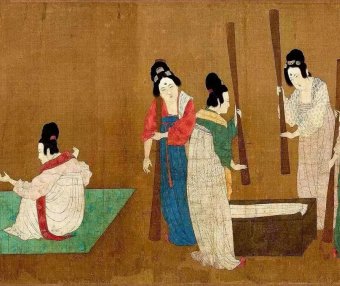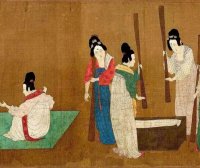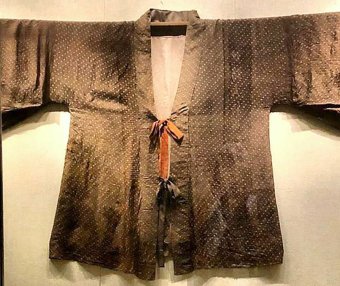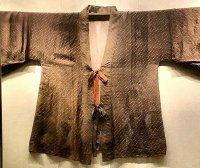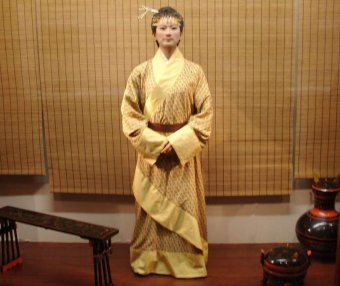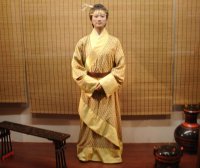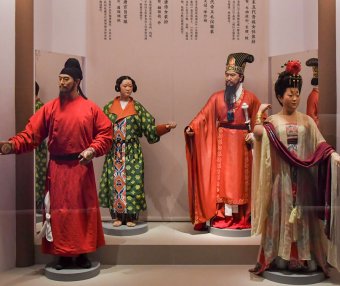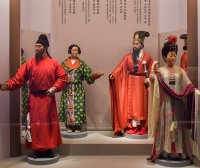Total 4 Articles
Topics: 10
-
Hanfu Unearthed IV: Tang Dynasty Relics in Astana Cemetery and Shosoin Repository
Haha so I lied in the last article, we’re actually doing the Tang Dynasty next! This is for sure going to be a favorite of everyone—after all, who can resist the flamboyant, vibrant beauty of the Tang Dynasty? Let’s get right to it and see where some of our favorite Tang Dynasty hanfu comes from. The Tang Dynasty was a period of time (618–907CE) preceded by the Wei/Jin Northern and Southern Dynasties and proceeded by the Five Dynasties Ten Kingdoms period, and then the Song Dynasty (the Five Dynasties Ten Kingdoms period is often regarded as part of the Tang fashion period for hanfu purposes because the fashion trends followed pretty closely). A flourishing golden age for China, the Tang Dynasty saw leaps and bounds in art, poetry, and exchange of culture—the most open-minded society that has existed in the world in a very long time. People freely exchanged cultural norms, aesthetics, and ideas between nations from the Silk Road and beyond, resulting in a blossoming of the world of clothing as well, and a rich collection of art for us to reference our hanfu off of. Astana Cemetery Interestingly, not a lot of clothing of the Tang Dynasty…...redsugarx
- 368
- 0
-
Hanfu Unearthed III: Wei/Jin and Northern/Southern Dynasty Relics
Hey everyone, thanks for waiting! Our next topic is gonna be pretty exciting for most of you who love the classic ruqun aesthetic: we’re going to be going over the historical relics for the Wei/Jin and Northern/Southern Dynasty! Since there are so few of these relics, this article is going to focus on the Wei/Jin Dynasty as a whole, including restored relics, art references, and misconceptions about the Wei/Jin Dynasty. It might be a bit of a shorter article due to little material, but I know that people are really interested in this period of time, so let’s get to it! 魏晉南北朝/魏晋南北朝/wei4 jin4 nan2 bei3 chao2/Wei/Jin and Northern/Southern Dynasties refers to the period of time between 220 and 589CE. Also known as 六朝/六朝/liu4 chao2/Six Dynasties, this set of dynasties are compressed into one general block of time by historians because of the rapid exchange of power. Following the Eastern Han dynasty, the Three Kingdoms period had the Cao Wei kingdom at its forefront, with the Western Jin Dynasty coming right after ruled by Sima Yan. This was followed by the Northern Dynasties, when the Northern Wei, Western Wei, Easter Wei, and Northern Zhou and Qi Dynasties followed each other rapidly,…...redsugarx
- 423
- 0
-
Hanfu Unearthed II: Mawangdui Han Tomb
The 馬王堆漢墓/马王堆汉墓/ma3 wang2 dui1/Mawangdui Han tomb is one of the most famous Han dynasty archaeological sites in China. Located in Mawangdui, Changsha, this elaborate tomb was found in 1968 and excavated in 1972 to reveal the remains of an incredibly well-preserved noblewoman that we now know was the wife to the Marquis of Dai in the Han Dynasty Kingdom of Changsha, Li Dai. A multilayered burial site containing furniture, food, art, accessories, and other belongings, the tomb contained her personal seal, which was found with the name 辛追/辛追/xin1 zhui1/Xin Zhui engraved in it; thus we know her as 辛追夫人/新追夫人/xin1 zhui1 fu1 ren2/Lady Xinzhui. (A quick disclaimer—this series of articles is a result of my own research. I’m not a trained historian or archaeologist, I’m an inexperienced student with an interest in hanfu and chinese history. I don’t have a works cited page for these (though I can point you towards some of the resources I used off the top of my head if you really want them), and I didn’t spend a long time verifying my sources beyond checking with multiple sources to make sure the information was consistent, because frankly I don’t have the time to do that. All…...redsugarx
- 319
- 2
-
Hanfu Unearthed I: Introduction
Hey everyone, sorry for the hiatus! I’m back now with a new series of articles—Hanfu Unearthed, a series examining the more technical, historical origins of hanfu. This series of articles is going to focus on the archaeological side of hanfu research: the relics that we’ve uncovered from various dig sites and tombs. The way that hanfu is defined by most is that its shape and construction is designed off of these relics, so let’s take a look at the real historical references that we have. A quick disclaimer—this series of articles is a result of my own research. I’m not a trained historian or archaeologist, I’m an inexperienced student with an interest in hanfu and chinese history. I don’t have a works cited page for these (though I can point you towards some of the resources I used off the top of my head if you really want them), and I didn’t spend a long time verifying my sources beyond checking with multiple sources to make sure the information was consistent, because frankly I don’t have the time to do that. All articles will come with this disclaimer, so please, please understand that I’m doing my best with what I…...redsugarx
- 242
- 2
